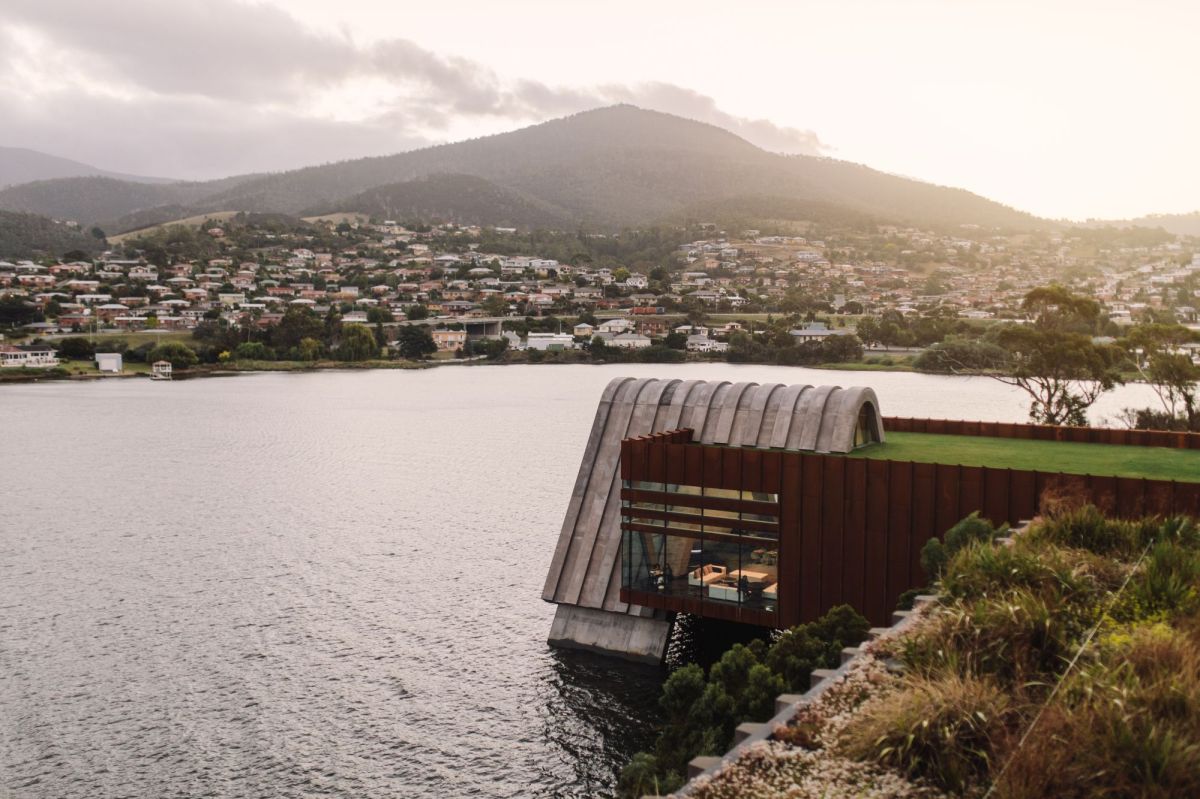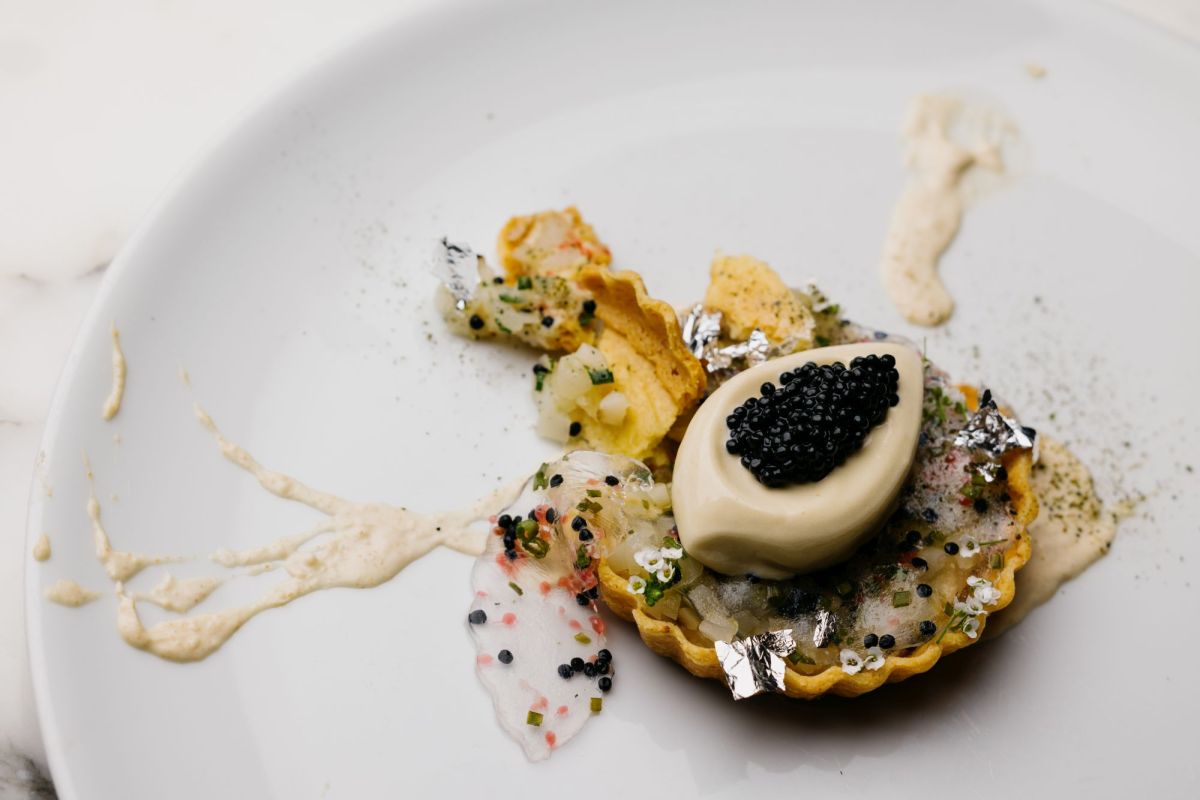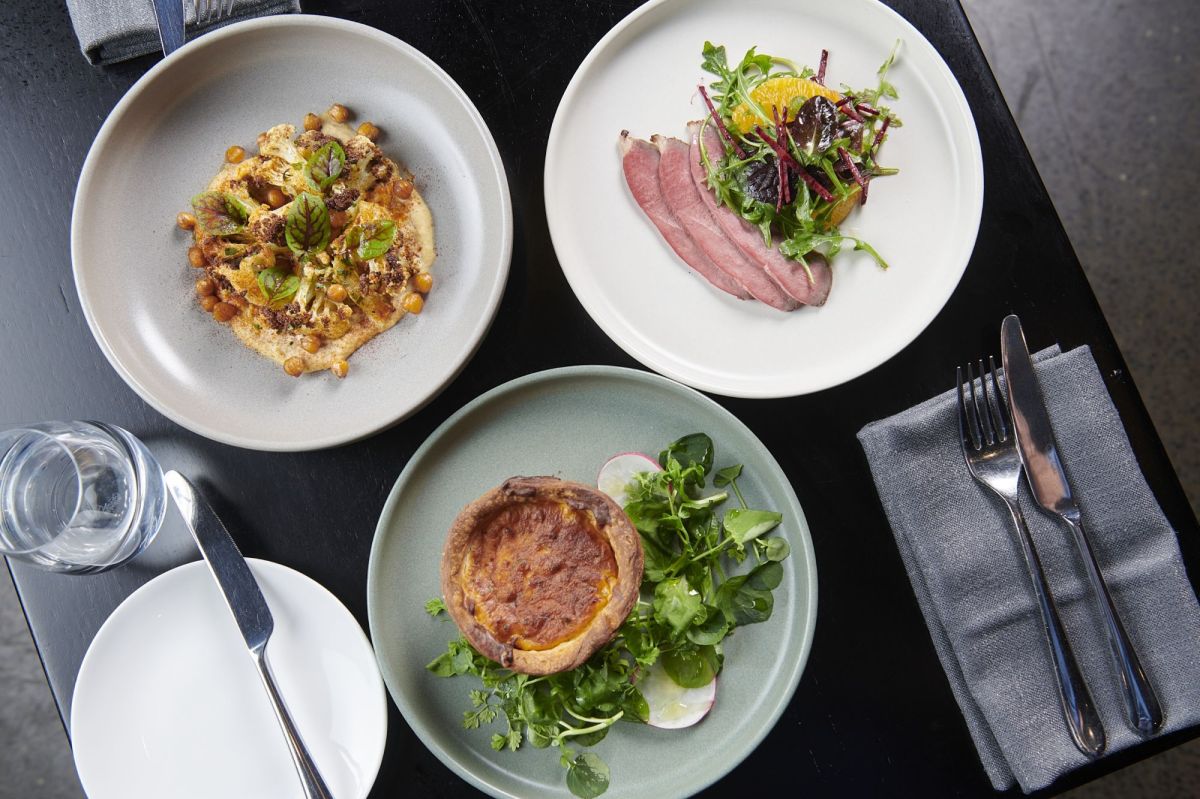Let’s face it, who doesn’t love the fine wine and canapé tradition that is standard fare at exhibition opening nights?
But what about sitting down for a four-course meal surrounded by art within the walls of the wide cube itself?
Next month, the Art Gallery of WA (AGWA) will offer audiences exactly that chance as part of its latest major exhibition by cross-disciplinary artist Tyrone “Rone” Wright, titled TIME ● RONE.
TIME.RONE comes directly from the artist’s hugely popular Flinders Street, Melbourne installation of the same name, which was part of Melbourne’s 2022 RISING Festival.
To complement AGWA’s version of TIME ● RONE, its TIME ● DINING initiative opens next month and will offer up to 16 diners per session their own table within the RONE exhibition space, where, for $350 per head and a maximum two-hour sitting, they can order from a menu designed by celebrity chef Guy Grossi, and drink Barossa Valley wine, while soaking up the emotions and atmospheres created by RONE’s immersive art.
A fine dining first for AGWA
This bespoke dining experience will open three nights a week until the end of the TIME ● RONE exhibition, making it a short-burst, pop-up presence within AGWA’s wider public program.
For AGWA’s Director Colin Walker, the decision to present gourmet dining as part of the gallery’s public program is part of its role to ‘offer to the public as full a range of different experiences as possible, including really intimate and special ones’.
From a curatorial point of view, Rone’s immersive installations provide the perfect context for such a fine art dining experience, and the artist himself says that he hopes TIME ● DINING will ‘encourage a greater social interaction and shared experience with the work’.
That said, the program’s high price point suggests that only those able to splash out on a one-of-a-kind meal will get that chance to spend extended time within RONE’s haunting, history-laden spaces.
It also prompts questions around the kind of time and effort major galleries should be investing in their food and drink offerings as part of their programs.
On this front, there are at least two other major Australian galleries that have already discovered the potential of creatively aligning certain food and drink offerings with their art to strengthen their audience reach.
Mona: where the art can appear on your plate
When it comes to an Australian art museum that delights and surprises while embracing audiences from all walks of life, there is perhaps no finer example than Mona (Museum of Old and New Art).
Famous for its bent towards risky shows and for taking every opportunity to thumb its nose at establishment thinking, it’s fairly remarkable that this privately-funded museum – inspired by its founder David Walsh’s intention to share his “sex and death” art collection with the public – has become one of the most beloved and cherished art museums in the country.

But there is a lot more to Mona than its exciting exhibition program and impressive art collection.
In particular, since the completion of its new Pharos space in 2017 – a central light-filled atrium space built to house five specially-commissioned James Turrell artworks – the museum’s food and hospitality team have been able to revolutionise their approach to visitors’ food and drink experiences.
As Mona’s Head Chef Vince Trim explains, ‘Before the Pharos space, I guess we thought of what we do in [the] museum’s hospitality area as [being] about places visitors could go to have some respite from the shows,’ he laughs, referring to Mona’s existing (and very popular) food and drink services, which include the Heavy Metal Kitchen, Void Bar and The Source Restaurant (named after the epic John Olsen painting installed on the restaurant’s stairway ceiling).
But as Trim describes it, Mona’s new Pharos wing has made him realise that food and drink experiences can play a more active role in museum-goers’ engagement with the art.
As he tells ArtsHub, ‘That space now includes our Faro Bar + Restaurant, which has become an incredibly popular place for people to go, not only because it is an exquisitely light-filled space, but because we have started curating its menu in line with our exhibitions.’
Trim describes how as part of Mona’s current Namedropping exhibition, diners at Faro can order from the museum’s specially designed Platedropping menu which – like the exhibition itself – is full of cheeky references to famous faces and high-end connections.
There is a gourmet WARHOL VS DALI dish (featuring Campbell’s cauliflower soup and Salvador seeds among numerous other delightful ingredients), as well as a COCOA CHANEL dessert (featuring chocolate marquise and coffee crumbed ice-cream) among other playful creations.
Read: Mona’s big flex – how David Walsh wrote himself into the books
For Trim, this creative approach to his menus supports a newfound realisation that Mona’s food and drink offerings can exist in closer connection with its always surprising, often provocative, exhibitions.
‘Ultimately, our ethos is about democratic access to art, and I think we are lucky that we are encouraged by David [Walsh] to experiment with the food side of what we do, to extend our visitors’ experience of the art in the many different ways they choose to engage with it.’

NGV’s Pierre Bonnard-inspired menu
Similarly, at NGV in Melbourne, the Gallery’s Assistant Director, Fundraising and Events, Misha Agzarian says it is vital for galleries like NGV to carefully consider their visitors’ experiences beyond the art alone.
‘Our audiences are incredibly sophisticated and have come to expect high-quality cultural and event experiences that go beyond interacting with art and design,’ Agzarian tells ArtsHub.
While NGV is known for its lively public program, which includes special arts events for young people (NGV Teens) and regular live music performances, when it comes to its food offerings, Agzarian says the Gallery’s most successful foray into this space so far has been for its Pierre Bonnard: Designed by India Mahdavi exhibition in 2023.
‘During this exhibition, NGV collaborated with chef Annie Smithers on a bespoke menu for the NGV Garden Restaurant, inspired by the traditional French bistros that Bonnard frequented in Paris in the 1900s and that featured in his paintings,’ Agzarian says.

‘Annie’s loyal following through her award-winning Trentham-based restaurant du Fermier brought in new audiences and was an amazing opportunity for us to share the Pierre Bonnard exhibition with visitors who may not have seen the show otherwise,’ she adds.
Thus, like Mona, NGV’s specially designed “tie-in” food offerings have subtly (and artfully) attracted audiences who may not have engaged so deeply with the exhibition program.
These examples are also reminders of how gallery-goers’ memories of their visits often extend beyond their impressions of the art itself and, as Agzarian aptly describes it, reveals modern audiences’ expectations that their galleries ‘take a holistic approach to cultural experiences, where everything on site has been carefully considered through a creative lens’.
